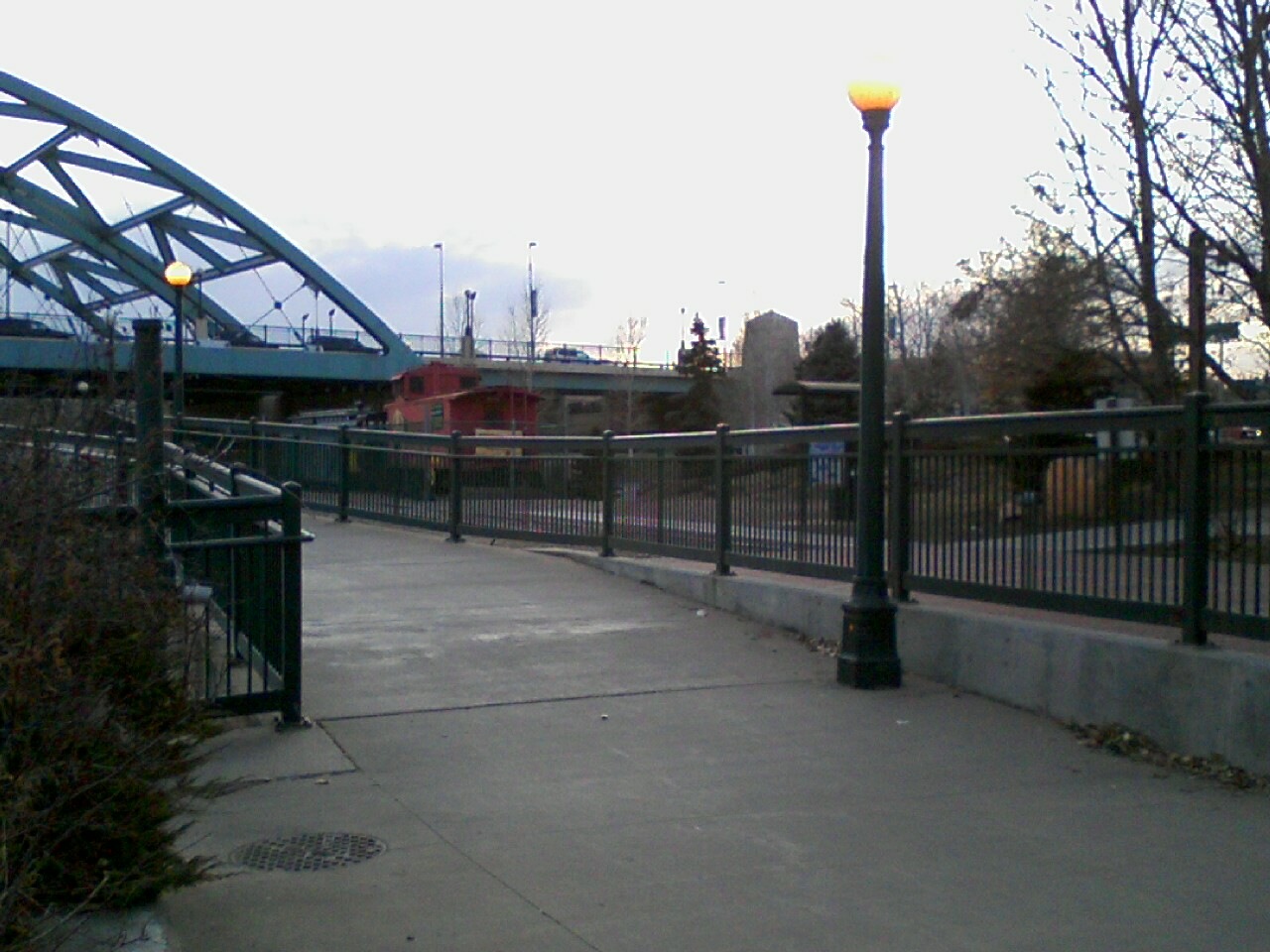The popular statistic of the urban bicycle movement notes that the majority of trips Americans make are within 3-5 miles of their home. The idea being that most of these trips could easily be handled by bicycle instead of automobile. Certainly many don’t have day-to-day trips which fit this boundary. I seldom had a trip under 3 miles when living in the foothills, everything but the post office was well outside that boundary. Even our net distance for this I-Pod trip surpassed this threshold. However, the leap frogs of destinations pretty much approximates it: 7-ish miles to work, about 2 miles up to REI, a couple miles to the mall etc. The longest sustained riding we did was the stretch from Cherry Creek back home: a bit over 10 miles I believe. Considering that higher concentrations of people live within cities or densely packed urban areas these average trip distances probably apply. Yet as a society we’ve steadily pushed away from focusing on inward urban mobility preferring to flee urban centers to well crafted suburbs where land is cheap and neighborhoods are tailored to provide the average middle-class American with access to a cul de sac, Wal Mart and Mini-Mall all within an easy drive. These subdivisions and suburban oases are often several miles (often 20 or more) from urban centers and dense business or commercial locations. As a result Americans cram onto freeways and sit in rush hour traffic for a significant portion of their daily commute. Additionally the piling of subdivision upon subdivision often occurs along broad boulevards spanning sometimes two or three lanes in each direction. So while in the suburbs serenity is supposed to come via proximity, it still is proximity measured by travel dependent upon the automobile.
As I sat waiting for Kate I caught a rare glimpse of this phenomenon in action as the waves of traffic queued up on Speer Blvd for entry onto I 25. I’ve never really considered the proximity of the bridge to the Confluence Park area: its right freaking there! I ride under it all the time but usually am looking at the river, other path travelers or more enjoyable sights, I can’t ever recall sitting and watching the traffic. Yet I found myself with time, and I couldn’t but help feel sorry for all of the flickering red brake lights as they filed their way onto the I 25 arterial to head either north or south to the suburbs beyond the city’s reach. I wondered how many were heading to far remote sites (Arvada, Brighton, Westminster, Castle Rock, Morrison), much like I did for 4 years; heading out from the city to the foothills up HWY 285, nearly 30 miles one way. As I pondered the building of the evening’s rush hour I’d notice the bikes that passed by me on the path: old mountain bikes, fixed gears, race bikes…dozens of different people out riding, some for recreation but most heading home with a backpack, pannier or messenger bag. As we rode up the Cherry Creek path we passed or were passed by dozens of people out commuting or riding their bikes. It actually surprised me how many people we saw, even on our return route west as we headed into ’the burbs.’
The investment in bike paths and bike lanes, coupled with an expansion of redoubled residential development within the Denver urban center has helped contribute to the growing number of people commuting by bicycle. I don’t know if it necessarily takes an oil crisis, global warming or economic catastrophe to help encourage people to ride. I suppose these events help assist in the belt tightening and alternative seeking of people looking to save a dime or a tree. Yet when it comes down to it I still think its just a simple question of quality of life. People like suburbs because they offer safety, convenience and comfort. Once people realize they can find these things in urban areas (and cities focus more on offering them) I think they too will gravitate to bicycling as a means of transport. People will ride because its fun, easy, convenient and safe. It ultimately doesn’t have to be more political or decisive than that. Perhaps the trick at this point is reaching out to the flickering lights in traffic and letting them know that they don’t really have to wait for that day to come, from where I was sitting at Confluence Park it pretty much already seems to be here.


No comments:
Post a Comment